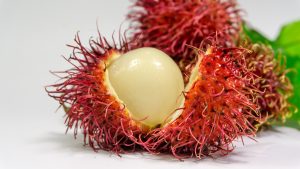
Intermittent fasting (IF) has emerged as a popular and effective dietary strategy, capturing the attention of health enthusiasts and researchers alike. Contrary to traditional diets that focus on specific food restrictions, intermittent fasting emphasizes when to eat rather than what to eat. This approach revolves around cycling between periods of eating and fasting, offering a flexible and sustainable way to promote overall health. In this article, we will explore the science behind intermittent fasting, its various methods, and the potential benefits it may offer to individuals seeking a holistic approach to well-being.

Understanding Intermittent Fasting:
Intermittent fasting is not a new concept; it has deep roots in human evolution. Our ancestors often faced periods of feast and famine, and our bodies adapted to function optimally in such conditions. This natural rhythm is mimicked by intermittent fasting, allowing the body to switch between fed and fasted states.
The primary principle of intermittent fasting is to create a fasting window during which no or minimal calories are consumed, followed by an eating window where one can consume meals. There are several popular methods of intermittent fasting, including:
- 16/8 method: Fasting for 16 hours each day and restricting the eating window to 8 hours is involved in this.
- 5:2 diet: In this approach, individuals consume a regular diet for five days of the week and drastically reduce calorie intake (usually around 500-600 calories) on the remaining two non-consecutive days.
- Eat-Stop-Eat: 24-hour fast once or twice a week, where no caloric intake is allowed is involved in this method.
- Alternate-day fasting: Individuals alternate between days of regular eating and days of either complete fasting or significant calorie restriction.

Scientific Basis of Intermittent Fasting:
Numerous studies have delved into the physiological changes that occur during intermittent fasting, shedding light on its potential health benefits. One key mechanism is the activation of autophagy, a cellular recycling process that removes damaged cells and cellular components, promoting cellular repair and regeneration. Autophagy is associated with various health benefits, including improved longevity and a reduced risk of chronic diseases.
insulin sensitivity and blood sugar levels are also influenced by intermittent fasting. During fasting periods, insulin levels drop, prompting the body to use stored glycogen and fat for energy. This process may help regulate blood sugar levels and reduce the risk of type 2 diabetes.
Furthermore, intermittent fasting has been linked to changes in hormone levels, such as increased production of norepinephrine and human growth hormone. Metabolism can be enhanced by these hormonal shifts, aid in fat loss, and support muscle preservation.

Potential Health Benefits:
- Weight Management: Intermittent fasting is widely recognized for its effectiveness in promoting weight loss and fat loss. Caloric deficit, a key factor in weight management, is contributed by the combination of reduced calorie intake during fasting periods and increased metabolism.
- Improved Metabolic Health: Studies suggest that intermittent fasting may lead to improved insulin sensitivity, reduced inflammation, and a lower risk of metabolic diseases, such as type 2 diabetes.
- Heart Health: Intermittent fasting has shown promise in improving cardiovascular health by positively influencing risk factors such as cholesterol levels, blood pressure, and triglycerides.
- Brain Health: Some research suggests that intermittent fasting may have neuroprotective effects, potentially reducing the risk of neurodegenerative diseases and promoting cognitive function.
- Longevity: The activation of autophagy and other cellular repair mechanisms during intermittent fasting has led to speculation about its potential impact on longevity. While more research is needed, initial findings are encouraging.
Conclusion:
Intermittent fasting offers a flexible and sustainable approach to health that extends beyond mere weight management. The scientific evidence supporting its various health benefits continues to grow, making it an intriguing and viable option for individuals seeking a holistic approach to well-being. However, it’s essential to note that intermittent fasting may not be suitable for everyone, and consulting with a healthcare professional before embarking on any fasting regimen is crucial. As research in this field advances, a deeper understanding of the long-term effects of intermittent fasting will undoubtedly emerge, providing further insights into its role in promoting a healthier and more balanced lifestyle.







